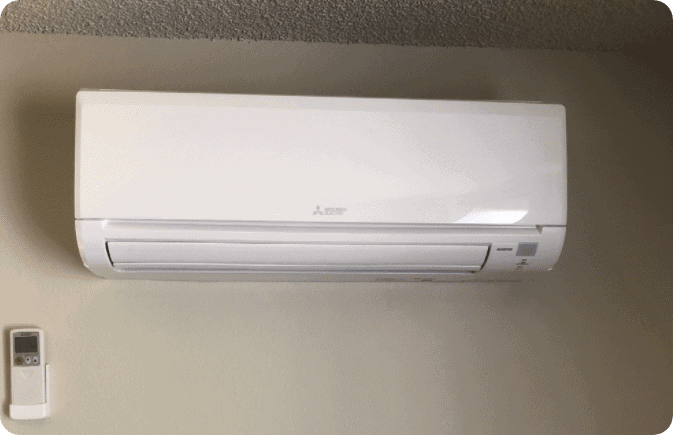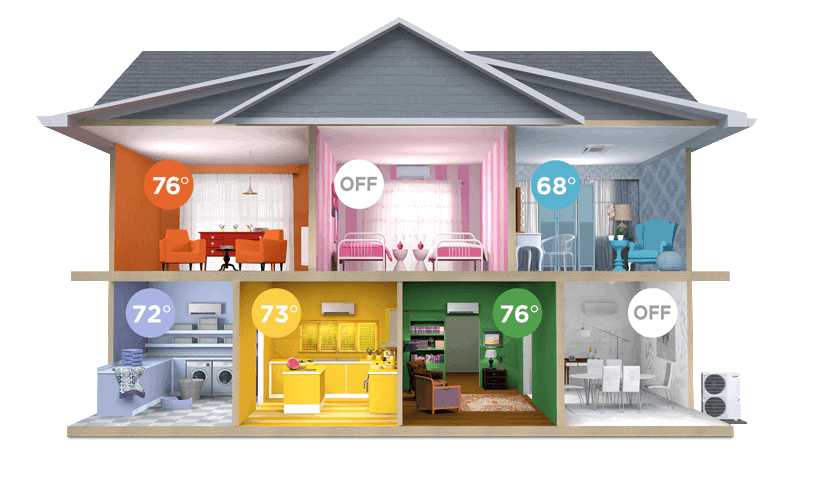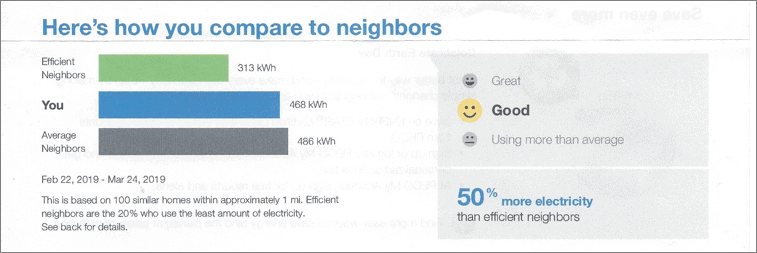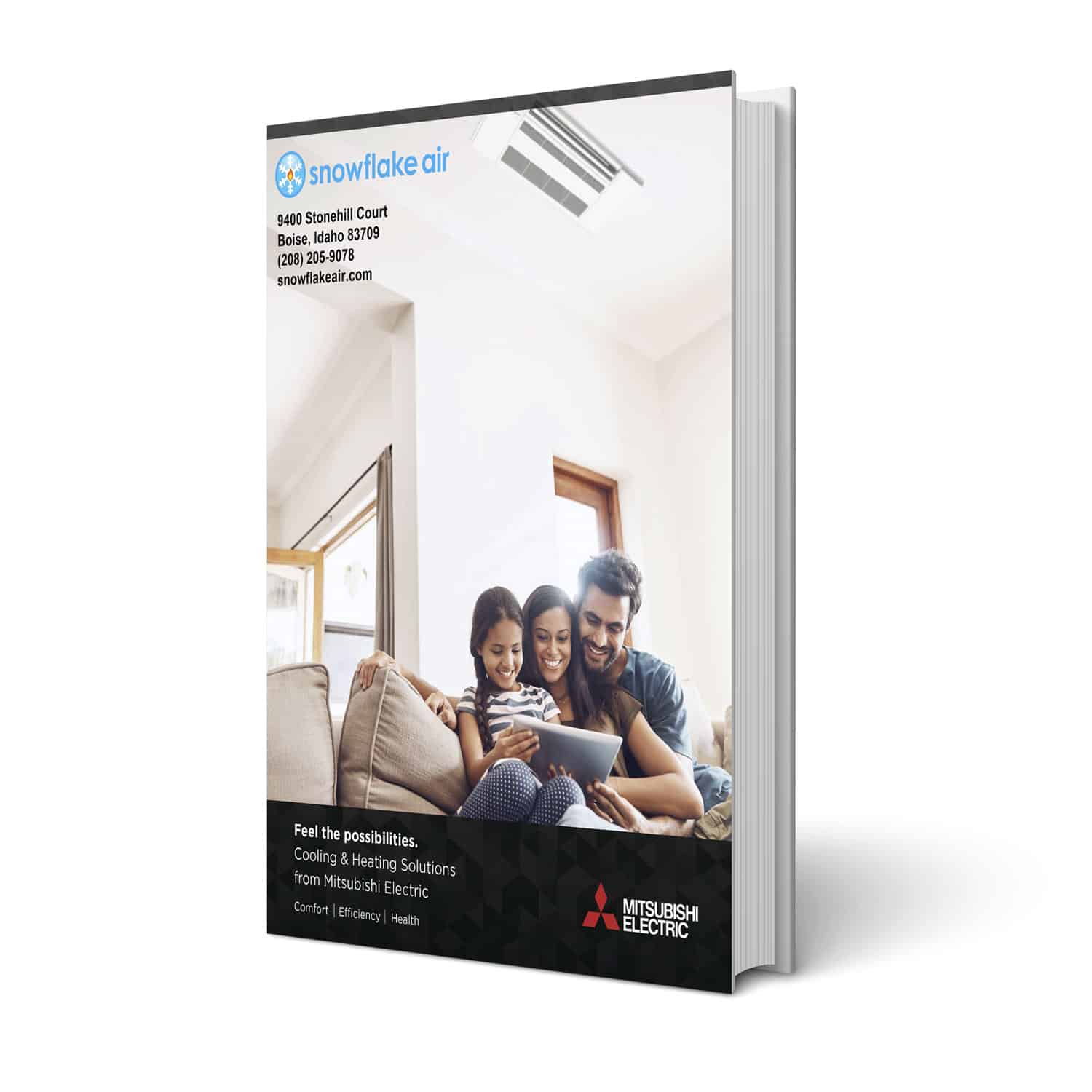 Ductless mini splits are among the most energy-efficient heating and cooling systems out there today. While the upfront price is more than what conventional HVAC costs, you’ll make up for it with lower energy bills in the years to come.
Ductless mini splits are among the most energy-efficient heating and cooling systems out there today. While the upfront price is more than what conventional HVAC costs, you’ll make up for it with lower energy bills in the years to come.
And, you can always call or email us for a free consultation to find out more about how ductless heating and cooling can make your Treasure Valley home more comfortable with lower bills.
Four Ways A Ductless Mini Split Lowers Your Energy Bills
A ductless mini split lowers bills first by using less energy to provide heat and cooling. Then, it does a better job of keeping your home at the temperature you want while using as few resources as possible. The four key components to this are:
- Inverter Technology
- Excellent Air Circulation
- Heat Transfer Vs. Generating Heat
- Zoned HVAC With Multiple Thermostats
Inverter Technology
Think of inverter technology like cruise control on your car, but for your heating and cooling. You know how you use less gas on the highway than in the city? That’s because you’re not stopping and starting. You’re cruising, and the car makes slight adjustments as needed to maintain that steady speed.
That’s what an inverter, or a variable-speed motor, does for your HVAC system. Traditional one-speed furnaces and central air motors can only turn on and shut off.
As a result, they have to “course-correct” when the temperature drifts away from your thermostat setting. That uses energy to start up and more power to move the needle by a few degrees. It’ll do this a few times every hour.
With an inverter, your mini split kicks on at full power to get to your desired temperature. Then, it goes into low-power mode to maintain that setting. It’s not using a lot of energy to stop and start. And, overall, it needs less electricity to keep the temperature steady.
As you can see, these work very differently than a forced-air furnace. Because of that, the cost of a ductless mini split vs. traditional system varies greatly. But, a mini split provides plenty of benefits you won’t get with a furnace or central air.
Read More: How Much Does A Mini Split Cost for Homes in Boise, ID and Valley County?
xcellent Air Circulation

Next, the air handlers we install inside use specialized fans and sensors to get the temperature where you want it as quickly as possible. After all, the faster it gets to the thermostat setting, the sooner it goes into low-power mode.
Here’s how that works.
The air handler can locate hot or cold spots in the room that it’s treating. Then, the fans inside that unit direct the treated air right to the pockets.
Read More: How Do Mini Splits Work?
That way, the room gets to the temperature you want much faster than with radiant baseboard heat or forced air through ductwork. Then, you’re using less energy overall — resulting in lower bills.
And, those lower bills don’t only help your monthly budget: Their exceptionally high energy efficiency makes mini splits eligible for rebates, tax credits and special federal financial incentives through the Inflation Reduction Act.
Heat Transfer Vs. Generating Heat
The most significant difference here is in the winter because you’re not generating heat. Instead, the system is only moving it from one place to another. That eliminates burning fossil fuels or using electricity to create heat. The transferring process is much less intensive.
All air conditioners use a heat transfer process. They pull warm air from the room, remove the heat, and send the cooled air back into the room. But, if you’ve ever heard a mini split get referred to as a “reverse air conditioner,” it’s because they use the same process in the winter.
Here’s what happens: There’s always heat outside, even when you’re so cold you need a jacket. The heat pump gathers that warmth or thermal energy. Then, it amplifies that heat and sends it into the house.
With Hyper Heat models, the heat transfer works as long as the temperature outside is above negative 13 degrees Fahrenheit. And, it never gets that cold in this part of Idaho.
But, the big takeaway here is that you’re not paying for gas that gets burned. Or for electricity to warm up coils to produce heat. The transfer process only needs a tiny amount of power for the heat pump to work. The thermal energy’s already available.
Read Real Case Studies Of Mini Split Installations In Boise Metro and Valley County
Zoned HVAC With Multiple Thermostats
Finally, you get “zoned” HVAC — and more control — with a mini split. Every handler has a built-in thermostat. That makes every room or part of the house a different “zone” for your heating and cooling. Each one works independently.
This setup eliminates common situations where people turn the thermostat up a few extra degrees because there’s that one room that’s always too cold. Or when they crank up the AC because the bedrooms are too hot.
Instead, each zone gets its own regulation. You don’t pay more to make your first floor extra cold just so that the bedrooms aren’t too hot. This way, the air handlers on the first floor go to low-power mode sooner than the ones upstairs.
Read More: Rebates and Financing Options For Treasure Valley Heat Pump and Mini Split Installations
Ductless Heating And Cooling In Eagle, ID
Ductless heating and cooling is an excellent way to make your Treasure Valley home much more comfortable while using fewer resources and paying less on your utility bills. If you’d like to learn more, call or email Snowflake Air for your free consultation. We specialize in heat pump and mini split installations in Eagle, ID along with other towns in Boise Metro and Valley County.





Trackbacks/Pingbacks